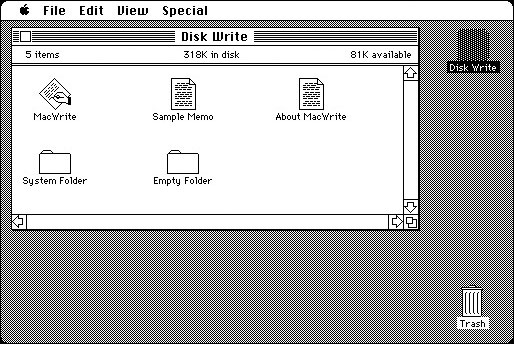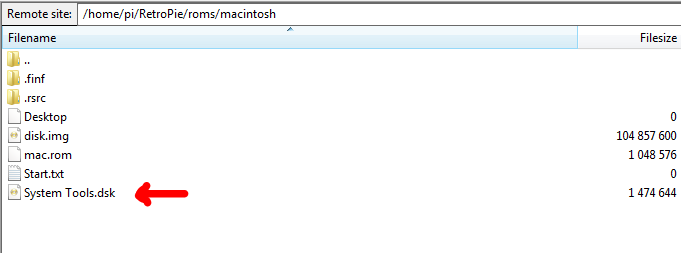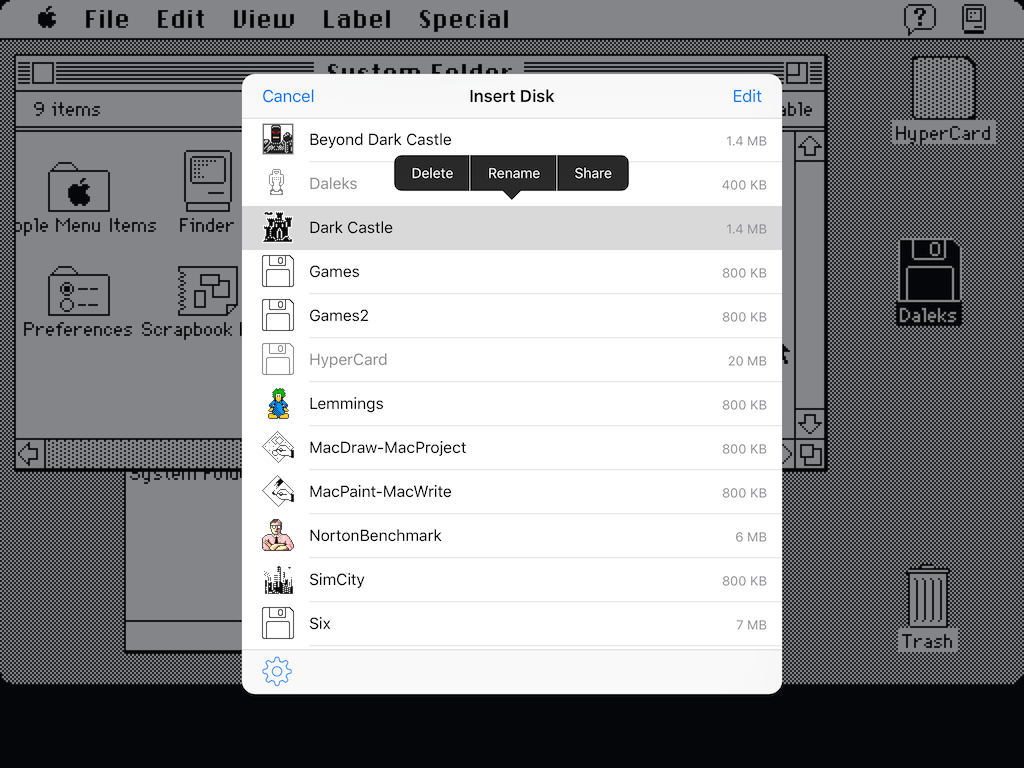
You can also just drag and drop the ROM file on to Mini vMac each time you run it.ģ. Don’t worry if Mini vMac can’t find the ROM file it will give you the name it is looking for so you can rename your ROM file to match. For the Plus you can rename the file to vMac.ROM, for the SE it was MacSE.ROM.
#Mini vmac disk images archive#
Luckily these ROM files are now available on the internet archive and can be used for personal/research purposes: 128, 512Ke (same ROM as the Plus), Plus, SE, SE FDHD, Classic, or II (can also use IIx, IIcx, II FDHD, SE/30)ĭownload or create a copy of your own ROM, then place that ROM file in the folder you created in section 1.2 above. if you downloaded the Plus variation of Mini vMac, you’ll need the a copy of the Plus’s ROM. To run Mini vMac you’ll need a file containing a copy of the ROM for the system you are trying to emulate, e.g. Mini vMac is now installed, and ready to run.Unzip the contents of the latest build to your destination folder.
#Mini vmac disk images install#

#Mini vmac disk images how to#
Once I have everything setup the way I want on the volume image I can use Basilisk II to copy the contents of the volume image to a drive image if needed.īecause Mini VMac is already well documented on sites like Emaculation, I’m only going to describe the basics of how to setup Mini vMac and focus on how you can use it to add or remove files from the System 6.0.8 or System 7.5.5 bootable volume images available to download on my site. I mainly use Mini vMac for working with System 6.x and earlier Systems that aren’t supported by Basilisk II. You probably know what Mini vMac is, but if not, a quick summary: Mini vMac is an open source emulator of some 68k-based Macintosh computers that runs on Windows, OS X, Linux, FreeBSD, NetBSD, Open Indiana, Microsoft Windows Mobile, and some other platforms.

This entry describes how you can edit my volume images on Windows 10 using Mini vMac (Mini vMac cannot read or modify drive images).

The target macs are one SE FDHD and one SE/30.One of the most popular features of my site is my ready made System 6.0.8 or System 7.5.5 bootable images for use with 68k Macintosh systems. Also, on the macs there are internal drives that I'd like to have working along with this.

How do I configure the scs2sd to get it booted? There is supposedly at least one bootable SSW 7.1 on one of the partitions. The file(1) command gives me the output below. The question now is how can I get this working with an external scs2i2sd (the one that plugs into the back). There are multiple partitions in the same image.


 0 kommentar(er)
0 kommentar(er)
